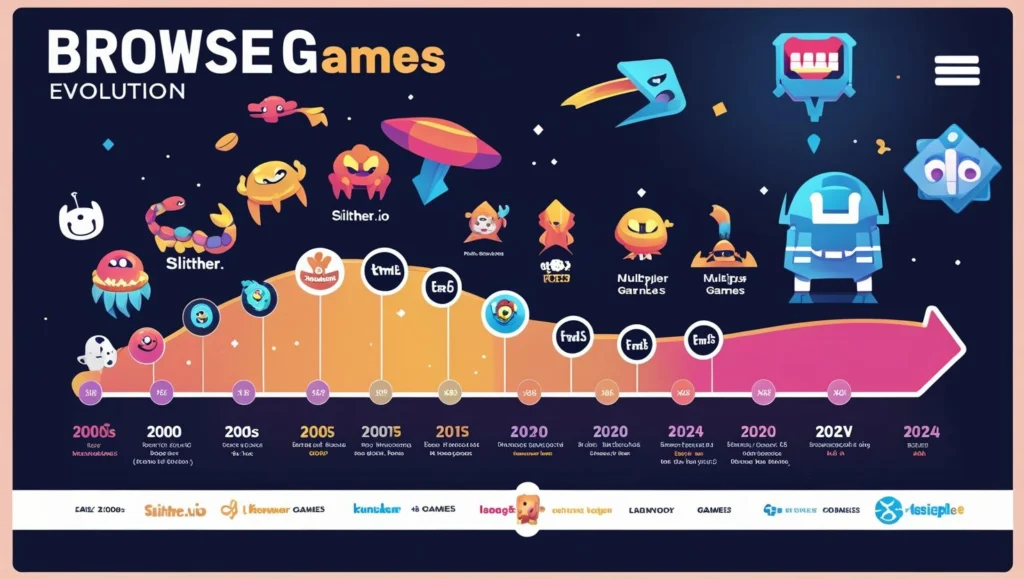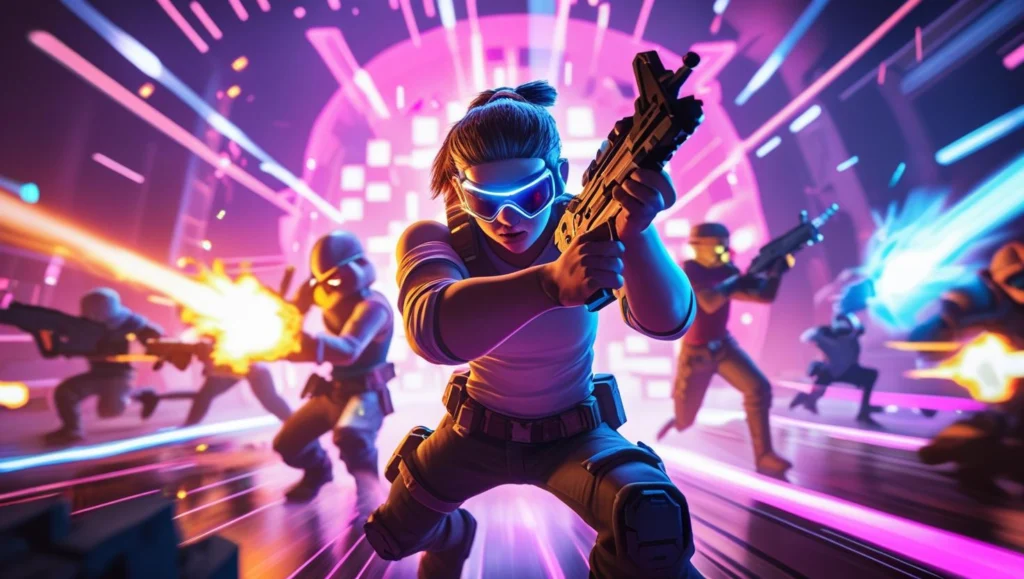Introduction
Browser games have come a long way since their inception. What started as simple Flash games has evolved into a booming industry with high-quality graphics, deep gameplay mechanics, and multiplayer modes. In this post, we’ll take you through the history of browser games, showing how they’ve developed from the early 2000s to the cutting-edge games we see today in 2024. Whether you’ve been a fan since the beginning or are just now jumping into the world of browser-based gaming, this journey through time will offer fascinating insights into the growth of this genre.

The Early Days of Browser Games
In the early 2000s, browser games were incredibly basic. These games were usually built with Flash or Java and were limited in terms of graphics, gameplay mechanics, and interactivity. They were mostly arcade-style games, designed to provide quick entertainment during breaks or downtime.
Key Examples:
“Line Rider”: A simple yet addictive Flash game where you draw lines to guide a rider down a slope.
“Neopets”: An early example of an online virtual world, combining simple mini-games with virtual pet care.
While these games didn’t offer deep gameplay or high-end visuals, they were incredibly accessible, and their free-to-play nature helped them gain massive popularity.
Looking for even more options? Our ultimate guide to Free Online Games No Download: Play Instantly & Unlimited at BrowserGamesHQ! has thousands more to explore!

The Rise of HTML5 and Flash’s Decline
Around 2010, the Flash Player began to decline in popularity due to security issues and the rise of HTML5. HTML5 allowed for more advanced graphics, smoother gameplay, and the ability to play games across devices (from desktops to mobile phones). This era saw the democratization of browser gaming, where developers had more tools at their disposal to create richer experiences.
Games that Paved the Way:
“Slither.io”: One of the first massively successful HTML5 multiplayer games, combining a simple concept with addicting gameplay.
“Agar.io”: A browser-based game that made waves by offering multiplayer gameplay with minimal graphics but compelling competitive mechanics.
HTML5 also made it possible for games to run seamlessly on mobile devices without the need for plugins like Flash, which was a game-changer for accessibility and cross-platform compatibility.
The Explosion of Multiplayer and Competitive Games
In the mid-2010s, multiplayer browser games took center stage. These games allowed players to interact with others in real-time, leading to an explosion of competitive online gaming directly in browsers. The introduction of persistent online worlds and multiplayer modes helped browser games evolve from simple single-player experiences to massive social hubs.
Examples of Key Games:
“Krunker.io”: A fast-paced, browser-based FPS game that introduced shooter fans to competitive gameplay with teams, maps, and rankings.
“Diep.io”: A tank battle game that added a sense of strategy and progression, combining competitive multiplayer with RPG-like elements.
The success of these games marked a shift in how browser games were perceived—what was once considered a casual hobby became a competitive space that could rival traditional gaming platforms.
The 2020s: Immersive Experiences and Cross-Platform Play
By the time we hit the 2020s, browser games had evolved into full-fledged experiences with immersive graphics, advanced AI, and cross-platform capabilities. Many of today’s best games have robust systems for leveling up, in-game economies, and multiplayer battles, which rival anything you’d find in a dedicated video game console.
Key Trends of the 2020s:
Advanced Graphics: While not quite matching the power of AAA games, browser games like “War Brokers” and “Realm Royale” now boast impressive visual fidelity and animation.
Cross-Platform Play: Many browser games allow players to transition between devices (desktop, mobile, etc.) without losing progress. This is especially important as the gaming world continues to move toward cloud gaming.
The Future of Browser Games
As we look to the future, browser games will continue to push the envelope. We can expect to see virtual reality (VR) and augmented reality (AR) elements gradually being introduced into browser games, creating even more interactive and immersive experiences.
Additionally, as the internet infrastructure improves and browsers get more powerful, we could see browser games begin to rival even console games in terms of graphics, gameplay depth, and world-building. With the increasing popularity of cloud gaming, browser-based games are well-positioned to become an even more integral part of the gaming industry.
Conclusion
The evolution of browser games has been nothing short of remarkable. From their humble beginnings as Flash-based mini-games to the immersive multiplayer worlds of today, browser games have transformed into a global phenomenon. As we move into 2024 and beyond, the future of browser games looks incredibly bright, offering limitless possibilities for players and developers alike. Get ready, because the best is yet to come.
































































